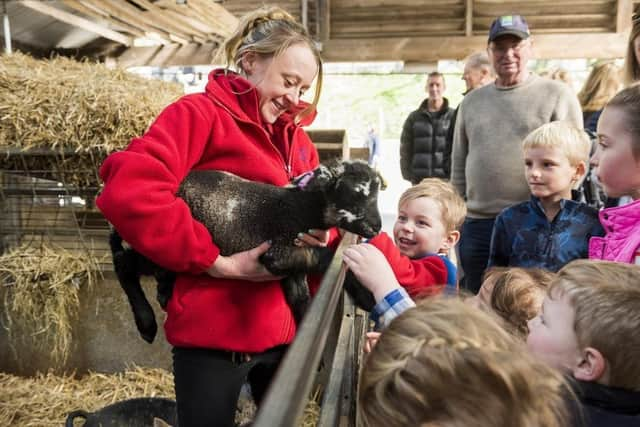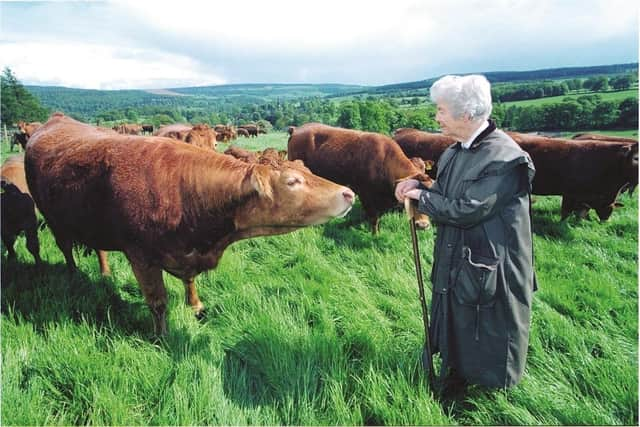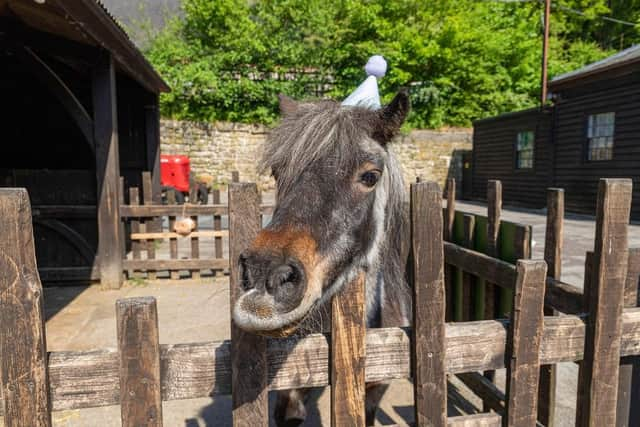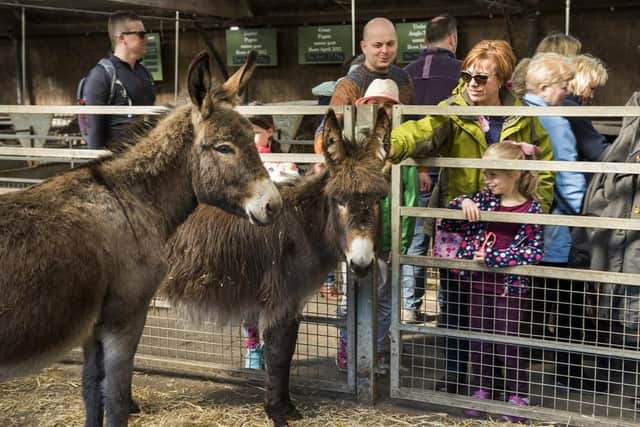Chatsworth Farmyard: Popular farm reflects on 50 years of business and looks to the future as public urged to ‘buy local’ to support British farming
and live on Freeview channel 276
The farmyard celebrated with a weekend of activities as well as a birthday cake, family-friendly events including face painting, crafts and rare breed talks.
Visitors were invited to meet some of their favourite animals including Annabel the Shetland pony, Seamus the donkey and baby goats, Rosemary and Thyme.
Advertisement
Hide AdAdvertisement
Hide AdWhile the farmyard has been around for 50 years, the estate it was built on has been around since the mid-16th century; the house and garden were built by Sir William Cavendish and Bess of Hardwick in 1555.


The farmyard itself was set up by Deborah, 11th Duchess of Devonshire, in 1973 after there was a demand from visitors to Chatsworth to learn all about farming on the estate and how the landscape is managed.
She converted a derelict estate building yard into a model farm and forestry attraction that displayed a milking parlour and a cross-section of the animals on the estate as well as many rare breeds considered ‘at risk’.
Farmyard office supervisor, Rachel Kearsey, said: “Its purpose was to provide visitors with the opportunity to learn and appreciate that farming fulfils two essential functions, the production of food and the preservation of the landscape, and that the two are inextricably linked.
Advertisement
Hide AdAdvertisement
Hide Ad“Since it opened we’ve welcomed more than five million visitors, including schoolchildren and multiple generations.


“If younger generations can develop an understanding and appreciation of where their food comes from, and the work and care invested in its production, then it will hopefully encourage them to buy local, as well as consider farming, or a supporting role, as a career.
“Buying local not only supports British farming but also protects the livelihoods of local farmers and rural communities. It also means we can import less produce from abroad, which reduces our carbon footprint and is better for the environment.
“We’d like the farmyard to continue the work that it has started - for multiple generations of visitors to spend an enjoyable and memorable day with us and to leave with a deeper understanding, and hopefully appreciation, of farm animals and the importance of protecting rare breeds.
Advertisement
Hide AdAdvertisement
Hide Ad“Early next year, we’ll be undertaking a redevelopment of our adventure playground, offering even more reasons to visit, time and time again.”


In 1983, the farmyard expanded into Stand Wood to construct a playground, as well as scramble nets, slides and a secret tunnel, turning the farm into a full day out, attracting young generations to the farming industry.
The yard proved to be a huge success and was remodelled 15 years later to include tall towers and walkways, a zip line and sand and water play and a lift between the lower and upper yards, making it accessible for all including families with pushchairs.
When discussing how farming has changed over the last 50 years and more, Ms Kearsey said: “Today, farming practices are influenced by factors such as climate change, consumer interest in animal welfare and the origin of their food, and a growing environmental consciousness that has seen a general shift, almost a return, to more sustainable methods of farming.
Advertisement
Hide AdAdvertisement
Hide Ad“Whilst a growing population means more food needs to be produced, farmers are mindful of over-cultivation and the need to reduce reliance on chemicals to preserve the ecosystem and wildlife habitats.


“Climate change is an increasingly difficult challenge for farmers to manage. Periods of sustained drought or rainfall result in damaged crops so farms have had to come up with creative solutions.”
Ms Kearsey reflects on the ways the farm has developed and grown over the years.
“Fifty years on, the farmyard’s mission remains unchanged - to offer visitors of all ages and backgrounds the opportunity to learn about farming, food production, and the importance of conserving rare breeds and traditional landscapes,” she said.
Advertisement
Hide AdAdvertisement
Hide Ad“In 2009, we held our first Young Farmers events; children and adults have the opportunity to gain a hands-on understanding and experience in caring for farm animals while learning a lot about a working farm in the process.
“We stage workshops on keeping pigs, chickens, goats and sheep, as well as smallholder courses which teach attendees everything they need to know about caring for their own farm animals.
“In 2020 we welcomed Jacob sheep back to the farmyard. The distinctive piebald breed is steeped in history and is quite possibly the oldest sheep breed in the world with historical references dating back to the Old Testament. Jacob sheep have grazed on Chatsworth parkland for more than 260 years.
“We’ve continued our conservation of rare breeds with 40 new rare breed ‘babies’ born this year so far, some we keep while others are sold to established farms for further breeding. We’ve also expanded our range of rare breeds, last month we welcomed Golden Guernsey goats to the farmyard for the first time.”
Advertisement
Hide AdAdvertisement
Hide AdThe farmyard has been visited by various famous faces including Prince William who completed work experience there, Alan Titchmarsh, who opened the Oak Barn in 2005 and author Arthur Parkinson, who often visited Chatsworth when he was a child.
Through its ongoing breeding programmes, the farm has helped preserve some of the country’s rarest and most endangered native breeds including Suffolk Punch horses, Albion cattle, also known as Bakewell Blues due to their Derbyshire roots, Gloucestershire Old Spot pigs, Bagot goats, Eriskay ponies, Derbyshire Red Cap, Cochin and Cream Legbar chickens.
Comment Guidelines
National World encourages reader discussion on our stories. User feedback, insights and back-and-forth exchanges add a rich layer of context to reporting. Please review our Community Guidelines before commenting.
